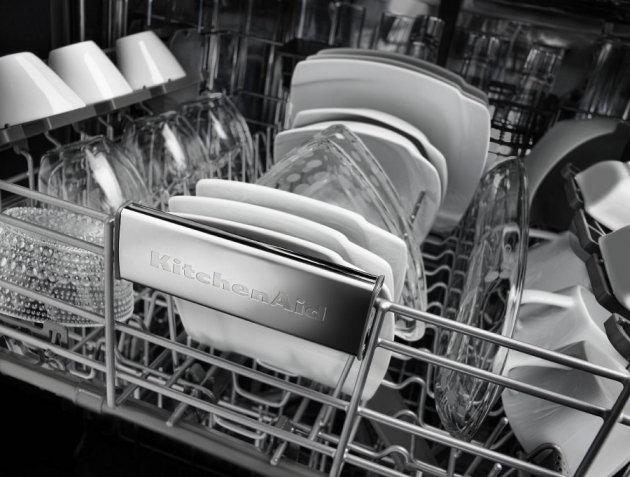Purchasing a dishwasher is a great way to make our lives easier and tackling dirty dishes in this way even saves water and energy. A dishwasher is a hard working appliance, but it won’t work efficiently if it’s loaded and unloaded incorrectly. Most people have their own techniques, but they don’t tend to think about them too much. In this article, we will look at the best way to load and unload the dishwasher to get the best out of the appliance.
Loading the Dishwasher
Let’s cover the best way to load the dishwasher starting with the top and then the bottom rack:
Start at the Top Rack
When you load the dishes, it’s better to start the loading at the top rack. The dishware should be placed in a strategic and organized way to get the best cleaning results. The glasses, cups, smaller bowls, and other smaller items should be located in the top rack. But, avoid overcrowding or the items may need to go through a second cycle which is inefficient. When items are placed too close together, the risk of breakage increases, and the flow of detergent and water around them is minimized. Always leave space around each item during loading and place dishwasher-safe plastics in the top rack only. This keeps them away from the heating element at the base of the appliance that can cause warping.
Move to the Bottom Rack
When the top rack is filled it’s time to move to the bottom rack where you should place the heavier items, including larger bowls, plates, pans, cooking pots, and other items. All aluminum and stainless-steel cookware should be placed on the bottom rack. But, any china, wood, bronze, or brass materials need handwashing to protect the surfaces from damage and discoloration. Dishwasher-safe plastic items that are too large to fit in the top rack should be placed at the back and sides. This will offer some protection against warping and the larger flat surfaces will not block the water spray.
Utensils and Silverware
Both racks are not filled and it’s time to load the utensils and silverware. These smaller items go in the utensil basket, but there are a couple of tricks that can boost the cleaning performance. It may seem like a good idea to put all the spoons together, but they tend to stick together and the cleaning power is diminished. It’s a better idea to mix the utensils up in the compartments to prevent nesting. All forks and spoons can be placed handle down, but for safety, it’s important to place knives in a handle up position. Grabbing a blade when you’re unloading the basket can cause a serious injury. Don’t wash silver and stainless steel utensils next to each other because a chemical reaction can dent the silver items.
Unloading the Dishwasher
Let’s cover the best way to unload the dishwasher starting with the bottom and then the top rack:
Start with the Bottom Rack
The water that collects on the surfaces of the items in the top rack can spill onto the items in the bottom rack if you unload the top rack first. So, it’s a better idea to unload the bottom rack first. Start with the larger items, give them a quick dry with a clean towel, if they still feel a little wet. Then take the utensil basket out and unload the items.
Move onto the Top Rack
The top rack is where you’re likely to find the items that are covered in water droplets. These are usually the plastic items and the items that are located in close proximity. Have a clean dish towel handy when you unload the top rack to finish off the drying process. Putting the items away as you unload can be a great time saver.
If you need to upgrade your dishwasher, you can browse our online collection or speak to one of our home appliance specialists.

